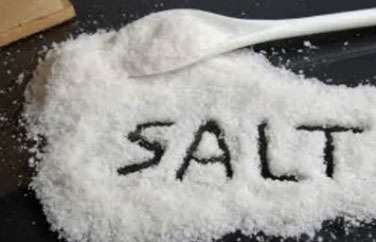HEALTHY LIVING/ EAT/SLEEP/DRINK WATER/TRAIN/STRETCH/REPEAT
Nutritional advice and diets for weight loss continues to be a highly debated and controversial topic within the fitness and sports performance communities. All I know is what research shows and what works for me! It’s all individualized and finding out what works for you can be very tricky. I recommend journaling and making detailed notes on how you feel within 20 minutes to an hour after you eat; do you have a headache? do you feel lethargic and tired? Did you mood change? Things like this are all red flags that only you can detail. Just do the work, make the notes and adjust accordingly.
THE GOOD CARBS

Carbohydrates include complex carbohydrates, like starches, and simple sugar such as white sugar, high fructose corn syrup and honey. Choose 100% whole grains and fruits and vegetables for most of your carbohydrates. Balance your carbohydrate choices with protein sources such as lean meat, poultry, eggs, or fish, and some healthy fat such as olive oil, avocado or nuts and seeds.
THE BAD CARBS

A low-carb diet can help you lose weight and control diabetes and other conditions.
Yet, figuring out which staple foods to limit is more challenging. Some of these foods are even relatively healthy — just unsuitable for a low-carb diet due to their high number of carbs.
Your total daily carb target determines whether you need to limit some of these foods or avoid them altogether. Low-carb diets typically contain 20–100 grams of carbs per day, based on personal tolerance.
THE UGLY CARBS

Increased sugar in your diet can contribute to weight gain and serious health problems such as heart disease, diabetes, high blood pressure, high cholesterol and inflammation. Keep these food to a bare minimum and I wouldn’t make them part of your grocery list. Just sayin…
FUNCTIONS OF CARBS
Complex carbohydrates include the fiber found in whole grains and vegetables.
Simple carbohydrates may be categorized as monosaccharides or disaccharides. Monosaccharides are made up of a single sugar unit and include glucose (blood sugar) fructose (found in fruit, honey and some vegetables,) and galactose (part of lactose). Disaccharides are made up of two sugar units and include sucrose (table sugar), lactose (sugar in dairy products), and maltose (rare in our food supply).
Carbohydrate intake may also be expressed in grams per kilogram of body weight (weight in pounds/2.2= weight in kilograms) Inactive individuals only need around 3 grams per kilogram per day, those exercising for more than an hour likely need 4-5 grams per kilogram body weight per day and athletes who in training intensely may need as much as 8-12 grams per kilograms.
These recommendations provide a place to start, but each individual must find what works best for his or her particular goal.
I would not recommend going zero carbs.
The human body stores a very limited amount of carbohydrates in the liver and the skeletal muscle in the form of glycogen. Liver glycogen helps maintain blood glucose, the sugar that is transported in the blood to supply energy to the body, including fueling the brain and other cells in the body that cannot use fat as furl. Because these carbs are limited, they must be restored on a regular basis. Note: the liver’s glycogen stores can be depleted overnight or during a 90 minute endurance activity.
FUNCTIONS OF PROTEIN
Proteins are long chains of amino acids with nitrogen attached. Recommendations for protein intake and it’s potential role in weight loss have received much attention in the media.
Protein has been promoted as the main nutrient required by the body, given a reputation as a “cure all,” of which you can never have too much. Although crucial to human health, muscular growth, and maintenance of soft tissues, protein along does not promote optimal health or cure a myriad of weight and health problems as some would like to believe.
Protein is, however, an important part of a balanced and vital macronutrient.
The dietary reference intake (DRI) for protein is 0.8 gms per kilogram of body weight per day. When expressed as a percentage of total calories, the recommendation is that 10-35% of an individual’s daily calories should come from protein. Individuals regularly participating in endurance and /or resistance exercise require more protein than sedentary individuals. Recommendations are 1.2-1.4 gms per kilogram body weight for endurance athletes and 1.6-1.7 gms per kilogram of body weight for strength athletes. Most athletes naturally consume adequate amounts of protein regardless of recommendations.
FUNCTIONS OF FATS
Lipids prove almost twice as much energy as carbohydrates – 9 grams per gram compared to 4 calories per gm that carbohydrates provide. Fats are classified based on their saturation.
A saturated fat consists of chains of carbons that is saturated with all the hydrogens it can hold; there are no double bonds. Fats are our main source of energy in the body. The typical adult male of normal weight and body fat has 100,000 calories of stored fat. In comparison, he will only have about 1500 calories of stored carbohydrates.It is a dense source of calories, supplying more than double the calories of carbohydrates and protein at 9 calories per gram.
Recommended intake of fat is as follows:
Adults age 19 and older should consume 20-25% of their total calories from fat. The type of fats consumed, rather than the total amount of fat, is an important influence on the risk of cardiovascular and other diseases. Animal fats tend to have a higher proportion of saturated fatty acids than plant-based foods. A strong body of evidence indicates that a higher intake of saturated fats in the diet is associated with increased levels of total blood cholesterol and low density lipoprotein (LDL) cholesterol. LDL is the molecule that carries lipids throughout the body and delivers cholesterol, which can accumulate on artery walls.
THE SCOOP ON SODIUM
 Sodium is a mineral that’s essential for life. It’s regulated by your kidneys, and it helps control your body’s fluid balance. It also helps send nerve impulses and affects muscle function.
Sodium is a mineral that’s essential for life. It’s regulated by your kidneys, and it helps control your body’s fluid balance. It also helps send nerve impulses and affects muscle function.
When there’s extra sodium in your bloodstream, it pulls water into your blood vessels, increasing the total amount (volume) of blood inside them. With more blood flowing through your blood vessels, blood pressure increases. It’s like turning up the water supply to a garden hose — the pressure in the hose increases as more water is blasted through it.
Over time, high blood pressure may overstretch or injure the blood vessel walls and speed the build-up of gunky plaque that can block blood flow. The added pressure tires out the heart by forcing it to work harder to pump blood through the body. And the extra water in your body can lead to bloating and weight gain.
Table salt is a combination of two minerals — about 40% sodium and 60% chloride.
Here are the approximate amounts of sodium in a given amount of salt:
1/4 teaspoon salt = 575 mg sodium
1/2 teaspoon salt = 1,150 mg sodium
3/4 teaspoon salt = 1,725 mg sodium
1 teaspoon salt = 2,300 mg sodium
One estimate suggested that if Americans moved to an average intake of 1,500 mg/day sodium, it could result in a 25.6 percent overall decrease in blood pressure and an estimated $26.2 billion in health care savings!!!
CAFFEINE
Caffeine used to be a big problem for me, personally. 2-3 cups of coffee along with 1-2 energy drinks per day had me hooked!
However, research indicates that moderate to high caffeine doses (5-13 grams per kilogram body weight) ingested approximately 1 hour before and during exercise increases endurance exercise performance. Research has also shown that caffeine is ergogenic in some short term hight intensity exercise and sport situations. Lower caffeine doses (3 grams pr kilogram body weight, or approximately 200 mg) taken before exercise also increase athletic performance, and low and very low doses of caffeine taken late in prolonged exercises also show a benefit. The response to caffeine intake can vary from person to person, therefore, it is important to determine whether the ingestion of 200 mg of caffeine before and/or during training and competitions is beneficial on an individual basis. People who consume it on a daily basis can become adapted and may have to use more caffeine to achieve the same effect.
After quitting all caffeine, with the exception of 2-3 sips of coffee on rare occasion, that I sleep so much better without caffeine.
FOOD LABELS
People shop at the grocery store looking for the latest buzz word for example, fat free, no sugar added, no salt added. low sodium, all natural, made with real fruit, zero trans fat, heart healthy, organic, low carb, etc…
Manufacturers will try to lure you into buying their product. They can’t lie to you about the nutrition and ingredients of their products, but they can easily mislead you into thinking something is healthier than it really is. Know the difference. It’s a law that food labels must tell the truth. However, manufactures can pick and choose which facts to highlight and spin so they catch your attention. BE AWARE!!
If you don’t have time to eat just try and “make better choices” whether you are on the road or just busy driving around town. Just MAKE THE CHANGE slowly.
SUPPLEMENTS
Supplements are a huge part of our culture both for health and athletic performance.Although supplements can offer a way to fill in the gaps of a healthy diet and exercise program, may faulty claims have been made, and there is confusion about the role of supplements in health and sports performance. The internet, magazines, and TV are so heavy with advertisements for products that claim to have the answer for those who want to gain muscle, improve athletic performance. lose weight, obtain more energy, and more. With so may claims and promises, it is no surprise that marketing data has shown a dramatic increase in sales of supplements in the United States, with sales totaling more than $13 BILLION!
It is important to note that no all supplements provide false claims; in face, several have been show to provide health and performance benefits when taken correctly. The difficult part is differentiating the beneficial ones from those that are harmful and those that simply fail to do what they claim. In addition, as the supplementation industry continues to grow, the scientific research into its claims grows as well.
